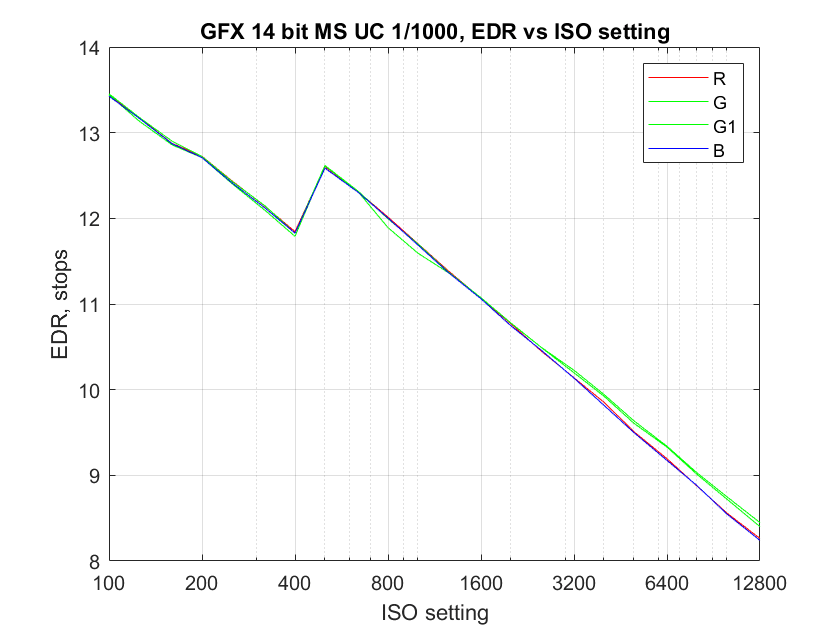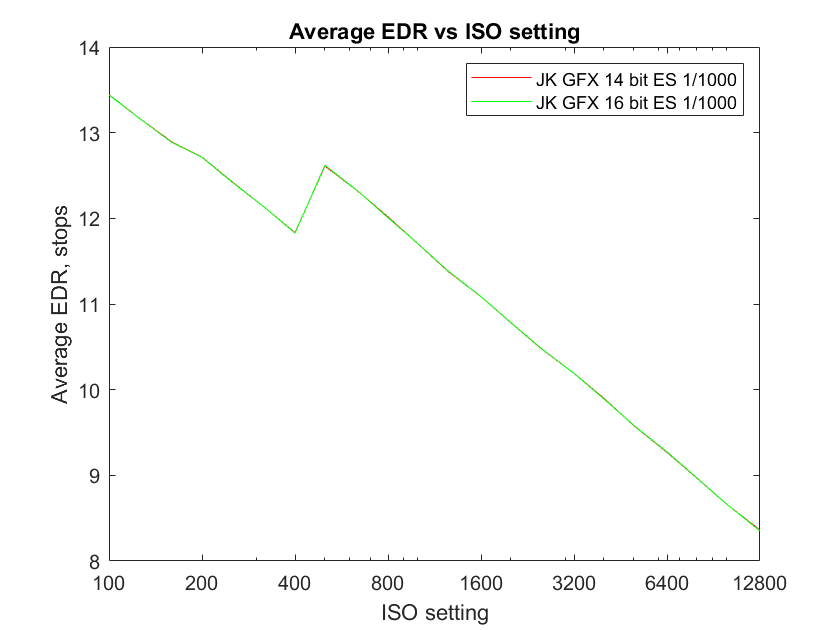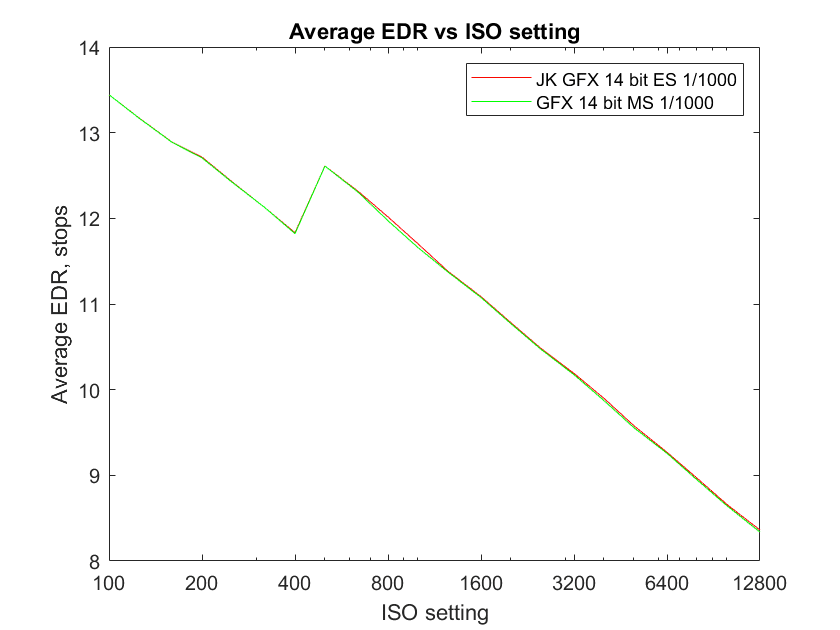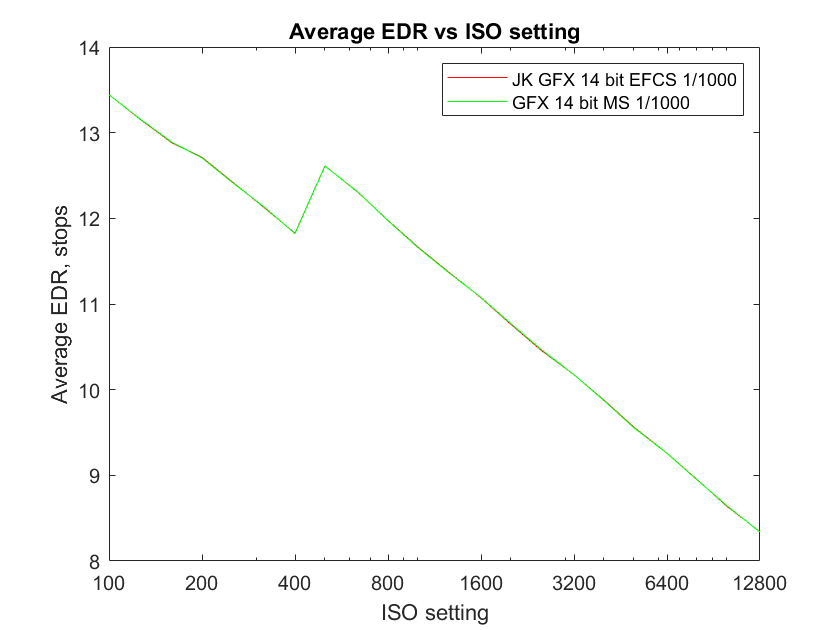This is one in a series of posts on the Fujifilm GFX 100. You should be able to find all the posts about that camera in the Category List on the right sidebar, below the Articles widget. There’s a drop-down menu there that you can use to get to all the posts in this series; just look for “GFX 100”.
I finally received my GFX 100 yesterday, so I’ll be posting a lot about it in the coming weeks. The first thing I did was perform my read noise tests on it. A few days ago, I did the same thing with samples that Lloyd Chambers has generously sent me. Today I’ll do it with my new camera.
But first, I want to rant. Why, oh why, does Fuji have to drastically change the user interface with every darned version of the GFX? This is the third, and all three have significant differences. The GFX 100 is far more different from the GFX 50S (the ur-GFX) than the GFX 50R was, and it is always a jarring experience for me to switch back and forth between the 50R and 50S. Eventually, I’ll learn the new interface, but switching back to one of the 50 MP GFXs will continue to be problematical. It’s not that the GFX 100 UI is bad, although I like it less than the GFX 50S, but just that it’s different.
OK, I feel better with that off my chest.
Here’s a set of curves showing the engineering dynamic range (EDR), which I’m defining here as full scale divided by the root-mean-square (rms) value of the read noise, using 14-bit raw precision and no compression. Shutter speed was 1/1000 second. All these tests were done with no lens. I used a body cap to get the dark field. The curves are all done using 600×600 pixel crops that have been shifted leftward just far enough to avoid the center column of the sensor, which is sometimes the site of aberrant behavior.
Doesn’t look much different from my results with Lloyd’s samples. Here’s what I said then:
The presence of the Aptina-DRPix technology is evident: that’s what causes the jump at the transition from ISO 400 to ISO 500. All four raw channels have the same DR until the ISO gets quite high, at which point the green channels do a little better than the red and the blue. There’s a funny kink in the curve at the transition to ISO 200. The black point also changes at this transition.I could show you a bunch of other modes separately, but they’re all so close that it would be pointless, so I’ll do a few comparisons.
Let’s compare 14-bit precision vs 16-bit raw precision, with electronic shutter (ES):
Mechanical vs electronic shutter at 14-bit precision:
EFCS versus all-mechanical shutter at 14-bit precision:
There may be some subtle improvements from using 16-bit precision, and I’ll be testing for that, but it looks like the read noise is high enough to adequately dither the analog to digital converter even at 14 bits.
My camera is a bit more consistent, but just about as noisy, as Lloyd’s.
Next up: EDR versus shutter speed.




sh6k says
I agree with your rant on changing the interface! I was a “cold dead hands” Fuji (XT and GFX) shooter for 7 years because I loved the physical dials. When the GFX100 meant I was going to have to give them up, I gave serious consideration to other cameras I hadn’t considered because they were missing physical dials and ultimately traded in my whole Fuji bag for a Z7, which I love.
Steve says
Congratulations, enjoy your new camera. I’ll be enjoyed it vicariously through your tests!
Erik Kaffehr says
Congratulations! Really looking forward to a lot of interesting reading! I also hope that you will really enjoy the camera and share a great part of images!
Narikin says
Happy you got yours Jim. Well Done. Looking forward to more tests.
2 questions from (not very technical) me:
1: So you may as well shoot at ISO500 rather than ISO400, for the boost in DR that extra gain gives us, correct?
2: Do the PDAF pixels which require interpolation to cover the sites where we are missing real color info, mean there might be a small of sharpness compared to a similar sensor without PDAF pixels embedded? (eg Phase One IQ150, or IQ100)
JimK says
Sort of. If you cut down on the exposure by a third of a stop when you go to ISO 500, you’ll have a worse SNR in the midtones and highlights than at ISO 400, but a better SNR in the deep shadows. For most images, the GFX 100 has plenty of highlight and midtone SNR, so it can be a good tradeoff.
They do indeed require interpolation, and this could in theory cause a loss in sharpness, but I’ve never been able to measure such a loss with other MILCs that use OSDAF, so I wouldn’t worry about it. I’m about to post an analysis of the GFX 100 sharpness.